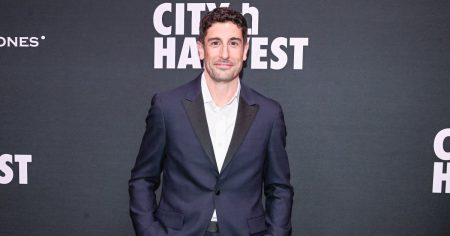The Curious Case of Caroline Calloway and the Alleged Connection to a Murder Suspect
Caroline Calloway, a social media influencer known for her provocative online presence and controversial past, has once again thrust herself into the spotlight with an outlandish claim. In the wake of the arrest of Luigi Mangione, the suspect in the murder of United Healthcare CEO Brian Thompson, Calloway proclaimed on X (formerly Twitter) that she had been intimately involved with Mangione. This declaration, delivered with her characteristic blend of bravado and flippancy, immediately sparked a wave of skepticism and demands for proof. Calloway’s history of embellishment and fabricated narratives, meticulously documented by former friend Natalie Beach, has conditioned the public to approach her pronouncements with a healthy dose of distrust.
Calloway’s past is littered with instances of manufactured realities and carefully constructed online personas. Her ascent to social media notoriety was fueled by a carefully curated image of a glamorous, jet-setting lifestyle, later revealed to be largely fabricated with the assistance of ghostwriters and purchased followers. This revelation, detailed in Beach’s scathing essay "I Was Caroline Calloway" and her subsequent book "Adult Drama," exposed the influencer’s penchant for self-deception and the blurring of lines between reality and fantasy. Calloway’s own memoir, aptly titled "Scammer," seemingly embraced this label, further muddying the waters of her public persona and raising questions about the authenticity of her claims.
The alleged connection to Mangione is not the first time Calloway has courted controversy with provocative statements. Her tendency to make eyebrow-raising pronouncements, often laced with dark humor and self-deprecating wit, appears to be a recurring theme in her online interactions. From declaring a two-year hiatus from dating literate partners to flippantly dismissing evacuation orders during a hurricane, Calloway seems to relish the attention generated by her outrageous pronouncements. Whether these statements are genuine reflections of her life or carefully calculated attempts to remain relevant in the ever-evolving landscape of social media remains a subject of ongoing debate.
The public’s reaction to Calloway’s claim about Mangione has been a mixture of disbelief and morbid fascination. Many have dismissed it as another attention-grabbing stunt, a desperate attempt to cling to relevance in the face of dwindling public interest. Others have expressed a morbid curiosity, eager to dissect the details and uncover any shred of truth beneath the layers of hyperbole and self-promotion. The demand for "receipts," a common refrain in the online world when faced with dubious claims, underscores the inherent distrust that Calloway has cultivated through her past actions.
The details surrounding the murder of Brian Thompson, while tragic, have become a backdrop for Calloway’s latest performance. The shooting, which occurred outside a prominent New York City hotel, sparked a nationwide manhunt that culminated in Mangione’s arrest at a Pennsylvania McDonald’s. The gravity of the crime, coupled with Calloway’s seemingly opportunistic attempt to insert herself into the narrative, has left many questioning her motives and the ethics of exploiting a tragedy for personal gain.
The question of whether Calloway is telling the truth about her alleged connection to Mangione remains unanswered. The lack of evidence and Calloway’s history of fabrication make it difficult to ascertain the veracity of her claim. However, the incident serves as a stark reminder of the performative nature of social media and the blurred lines between reality and carefully constructed online personas. Calloway’s actions, whether driven by a genuine connection to the suspect or a calculated attempt to remain relevant, raise important questions about the ethics of self-promotion in the digital age and the potential consequences of exploiting tragedy for personal gain. Her story continues to unfold, leaving the public to decipher the truth amidst a carefully constructed web of performance and self-promotion. The line between reality and fabrication in Calloway’s world remains as blurred as ever, leaving observers to question the authenticity of her claims and the motives behind her provocative pronouncements.










